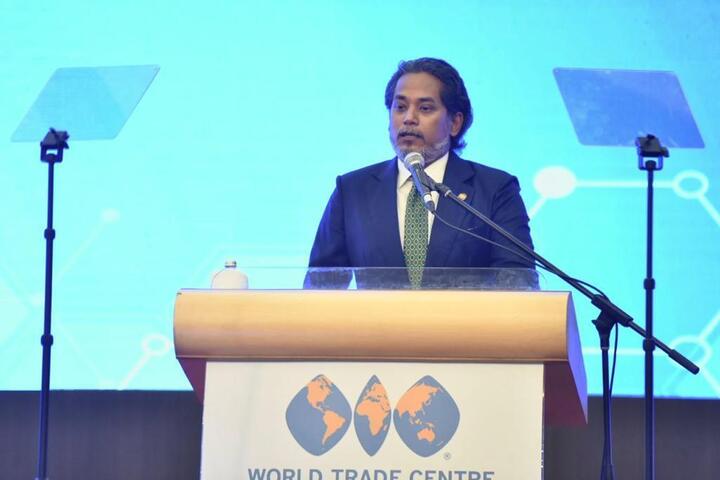KUALA LUMPUR, August 15 – Health Minister Khairy Jamaluddin today proposed organisational change in Malaysia’s dual health care system by integrating public and private health care delivery.
He pointed out that today’s health system will naturally change over time as Malaysia shifts from “sick care” – based primarily in hospitals – to health care and wellness.
Technology, he said, would enable earlier intervention to maintain one’s health so that resources can be focused on critical cases that require curative care.
Such a fundamental shift in service delivery and focus, which would lead to integrating the public and private health care systems, would require flexibility from both the public and private health sectors.
“It may also see an evolution in the role of the Ministry of Health (MOH), devolving service delivery in order to focus on public health surveillance, policy development, research, regulation, monitoring, and evaluation,” Khairy said in his keynote speech today at the Health Policy Summit 2022 on the Health White Paper at the World Trade Centre here, organised by MOH.
“Personally, I am not sure that the Ministry of Health Malaysia should continue to be the bureaucratic Leviathan it presently is: the biggest provider, payer and regulator of health care. The White Paper will also be an exercise for our own existential reform,” he added.
Khairy plans to table a Health White Paper in Parliament by year end on wide-ranging health care reforms for a 15-year period, spanning proposed changes to health care financing, among other issues, that he suggests to be supervised by a Health Reform Commission.
MOH is the biggest public health care provider, running public hospitals and health clinics that are funded by allocations to the ministry from the general tax revenue base.
Other public health care providers include university teaching hospitals as well as military hospitals. Funding of these facilities generally come from allocations for the Ministry of Higher Education and the Ministry of Defence respectively from the general taxation pool.
Private health care providers operate via fee-for-service, where patients pay for services either out-of-pocket or with private insurance.
Public-Private Integration To Facilitate Seamless Flow Of Care
Khairy highlighted the imbalanced distribution of equipment, capacity, and skill mix between the public and private health care sectors that leads to gaps in health care coverage between states and urban and rural areas.
The public health sector, he noted, sees two-thirds of outpatient and inpatient cases.
“The lack of partnership and integration between the public and private sectors means that the public sector is continuously and increasingly stretched, sometimes to near breaking point as vividly demonstrated during the peaks of the Covid-19 pandemic,” Khairy said.
“Apart from a maldistribution of resources, the dichotomy of the health care system has also meant that information is not easily shared, leading to delays in diagnosis and treatment, unnecessary repeated investigations and added costs.”
Better integration between the public and private health care sectors, he said, would reduce pressure on public facilities, while increasing access for patients and facilitate a seamless flow of care between health care providers – whether in the public, private, or non-profit sector.
“Part of this work requires the sharing of patient records across facilities and providers, and towards this end, initiatives to pilot and scale up electronic medical records will be critical.”
The health minister said strategic procurement of services from private health care providers is a part of public-private integration, but acknowledged concerns about medical inflation.
“The Health White Paper would ultimately weigh the merits of viewpoints against global evidence and outline the most feasible principles of reform towards addressing the maldistribution of workloads across public and private providers, and to ensure resources across the public sector and private sector are optimally utilised.”
Primary Health Care Should Provide More Community Services
Khairy stressed the need to prioritise primary health care in order to move from “sick care” to health care and wellness.
Primary health care, he said, should take on more services that can be managed in the community but are currently being provided in hospitals, such as certain disease management, rehabilitation, and palliative services.
“And most importantly, primary health care providers should be the first point of contact for people to receive and consult on health services, especially promotive and preventive care,” Khairy said.
“This will also have a tremendous impact on hospital services that can be freed up, decongested and allowed to focus on complex curative cases.”
The health minister said primary care services should also work more closely with other sectors, such as by forming family health teams, to manage chronic diseases and medical and social support for the elderly.
“The health workforce will need to be diversified as well, with new cadres created in community-based health and social care, include informal carers or volunteers.”








